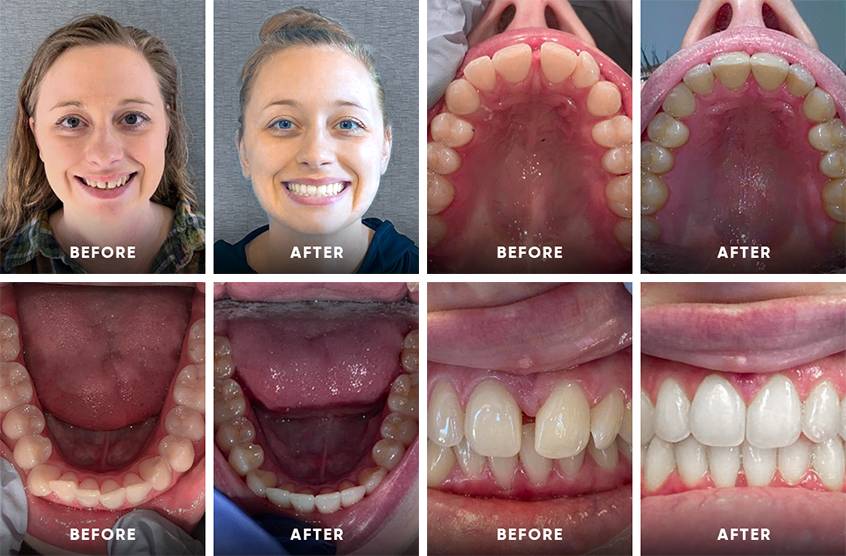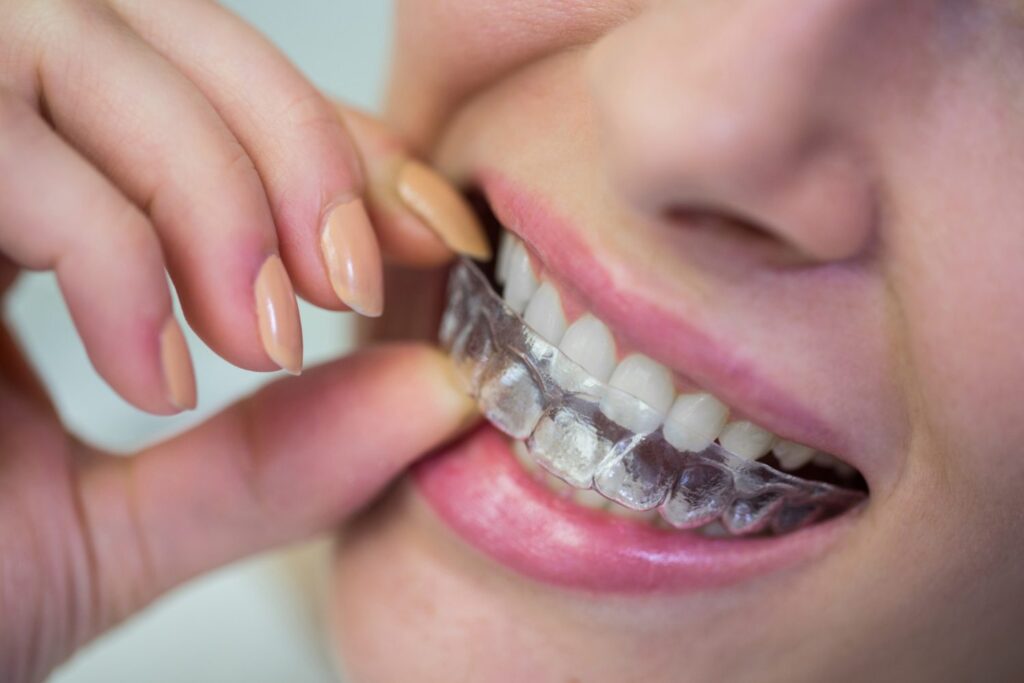The Ultimate Contrast: Invisalign vs. Traditional Braces for Adults
The Ultimate Contrast: Invisalign vs. Traditional Braces for Adults
Blog Article
Invisalign vs. Traditional Braces: Which Alternative Is Right for You?
When considering orthodontic therapy, the selection between Invisalign and conventional dental braces provides numerous vital aspects that merit mindful assessment. Invisalign offers a discreet choice with detachable aligners, while standard braces provide a much more visible yet efficient remedy for severe imbalance. Each option includes unique benefits and drawbacks related to appearances, convenience, therapy duration, and price. Recognizing these subtleties is crucial for making an informed decision that straightens with your personal preferences and way of living. The inquiry stays: which choice will ideal fulfill your orthodontic needs and expectations?
Review of Therapy Alternatives

On the other hand, standard dental braces contain steel brackets and cords that are bonded to the teeth. This approach uses continual stress with time to accomplish positioning. While efficient for complex orthodontic concerns, standard braces need routine visits for adjustments and can position challenges in maintaining dental hygiene as a result of the trouble of cleaning around cables and braces.
Both alternatives have their advantages, and the selection typically depends upon certain dental conditions, way of living preferences, and individual compliance. Eventually, seeking advice from an orthodontic professional is crucial for establishing one of the most suitable therapy strategy customized to individual demands. Recognizing the subtleties of each choice can dramatically affect the total success of orthodontic therapy.
Visual Factors To Consider
A substantial aspect affecting the selection between Invisalign and conventional braces is the aesthetic appeal each treatment offers. Invisalign aligners are crafted from clear plastic, making them basically unnoticeable when used. This very discreet look is specifically interesting adults and teens who might feel awkward about their orthodontic treatment. The capacity to maintain a natural smile throughout the positioning process can substantially enhance the patient's self-confidence in professional and social setups.
In comparison, traditional braces contain metal braces and cables, which can be a lot more obvious. While advancements in orthodontic innovation have resulted in the advancement of smaller sized braces and colored elastics, typical dental braces still keep a more obvious account. For some individuals, the visibility of dental braces might deter them from looking for necessary treatment.
Ultimately, the selection between Invisalign and standard braces might rest on personal preferences relating to visual appeals. Clients that focus on discretion typically favor Invisalign, while those that are less concerned concerning presence may select typical braces. Recognizing the visual ramifications of each alternative is essential for making an educated decision that aligns with one's way of living and choices.
Convenience and Convenience

In terms of benefit, Invisalign aligners are detachable, allowing clients to appreciate their favorite foods without constraint and preserve optimal dental health. Cleaning and flossing are streamlined, as the aligners can be taken out during these routines, whereas standard dental braces call for cautious maneuvering around brackets and cords.
In comparison, conventional dental braces demand routine changes, making them much less practical for those with active routines. Overall, the comfort and convenience of Invisalign make it an appealing option for many individuals seeking orthodontic treatment.
Treatment Period and Efficiency
While both Invisalign and standard dental braces are effective in fixing dental misalignments, the duration of treatment can differ considerably in between the two choices. Generally, Invisalign therapy can take anywhere from 12 to 18 months, depending upon the complexity of the situation. The clear aligners work by progressively shifting teeth into their desired positions, and normal follow-ups with an orthodontist assistance make certain progress stays on course.
On the other hand, standard dental braces often call for a longer dedication, generally ranging from 18 months to three years. This is because of their fixed nature and the use of brackets and wires, which can be a lot more effective for serious imbalances and intricate situations (Invisalign). The therapy performance of conventional dental braces is well-documented, as they enable for accurate adjustments and higher control over tooth motion
Eventually, the option in between Invisalign and conventional braces might pivot on both the expected treatment period and the particular oral problems available. Consulting with an orthodontist is important, as they can offer customized suggestions based on private requirements, guaranteeing the picked technique straightens with preferred results and durations.
Expense Comparison and Insurance Options
Cost plays a substantial function in the decision-making procedure for individuals thinking about orthodontic treatment, whether choosing for Invisalign or standard braces. Generally, the price of Invisalign ranges from $3,000 to $8,000, while traditional dental braces commonly set you back between $2,000 and $6,000. Aspects influencing these expenses consist of the intricacy of the case, the period of therapy, go to my site and geographical location.
Insurance protection can considerably affect out-of-pocket expenses. Several oral insurance coverage plans offer partial published here insurance coverage for orthodontic therapies, but the specifics can vary commonly. It is crucial for individuals to review their insurance plan to determine the degree of coverage for either alternative. Typically, typical braces might be extra regularly covered by insurance policy plans contrasted to Invisalign, which some insurance companies categorize as an aesthetic procedure.
Additionally, a number of orthodontic practices offer flexible layaway plan, making both treatment alternatives much more easily accessible. Patients ought to ask about potential funding choices and discount rates for upfront settlements. Evaluating the total cost, consisting of insurance policy benefits and layaway plan, is crucial for making an informed choice that straightens with both aesthetic choices and budget plan considerations.

Verdict
In recap, the selection in between Invisalign and typical dental braces pivots on multiple aspects, consisting of visual choices, convenience, treatment duration, and expense. Invisalign offers a discreet, removable alternative that assists in dental health and dietary versatility, while conventional braces might be better for complex oral concerns and usually come at a reduced price point. Inevitably, consultation with an orthodontist is crucial to analyze private circumstances and determine the most proper therapy option for attaining ideal dental alignment.
When taking into consideration orthodontic treatment, the choice in between Clicking Here Invisalign and conventional braces presents numerous vital variables that warrant careful assessment.Comparing Invisalign and typical dental braces exposes distinctive therapy options for orthodontic modification.While both Invisalign and typical braces are efficient in dealing with dental imbalances, the duration of treatment can differ substantially between the two alternatives.Expense plays a considerable function in the decision-making process for people thinking about orthodontic therapy, whether opting for Invisalign or typical braces.In recap, the option between Invisalign and conventional braces hinges on several factors, including visual preferences, comfort, treatment period, and expense.
Report this page